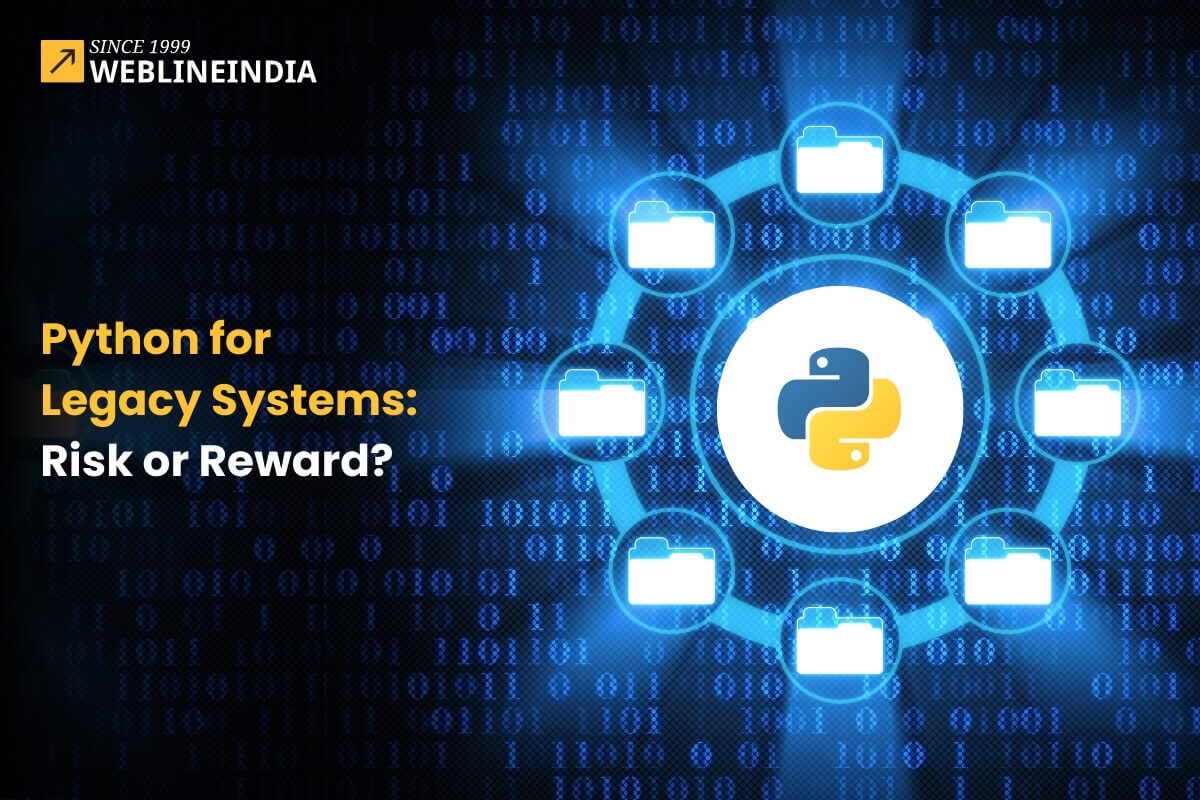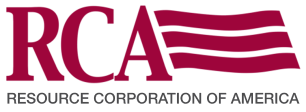Listen to the podcast :
Legacy systems are the bedrock of many organizations, holding valuable data and supporting critical business processes. However, these aging systems often present challenges in terms of maintenance, integration, and scalability. As businesses evolve and technology advances, legacy modernization becomes crucial to ensure continued efficiency and competitiveness. One increasingly popular option for legacy system modernization is to utilize Python.
According to Statista, a research giant firm, Python is one of the top 5 programming languages used by developers all over the world.
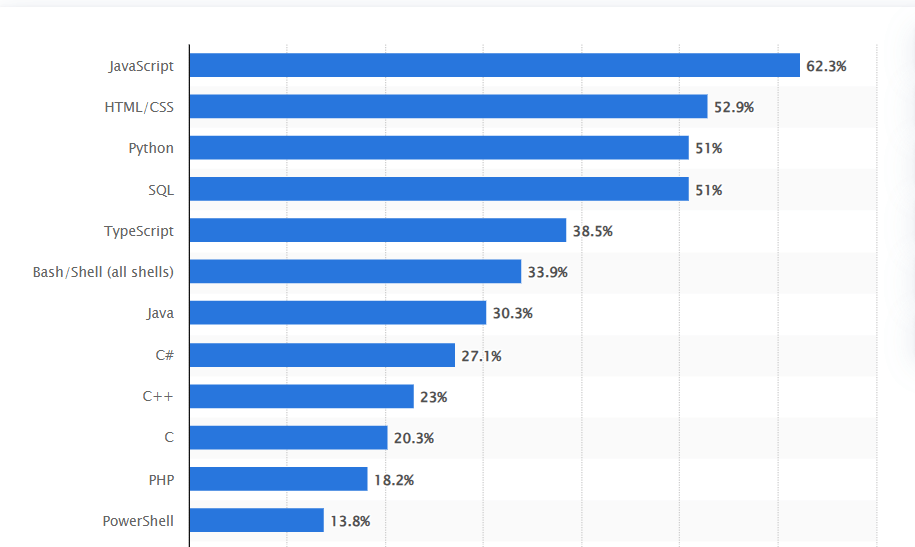
Statista: Top programming languages worldwide
Renowned for its readability, versatility, and extensive ecosystem, Python offers a compelling case for breathing new life into outdated systems; hence, you find the top industries leveraging Python for business solutions all over the world.
But is it a risk-free choice?
This blog post delves into the benefits, risks, and best practices of employing Python development for legacy systems.
Is Python the right choice to modernize your legacy systems?
What are Legacy Systems?
Legacy systems refer to older computer systems and applications that remain in operation, often built upon outdated technologies and architectures. These systems, while functional, can become a bottleneck for innovation and growth.
Typical characteristics of legacy systems include:
- Outdated Hardware: Relying on obsolete hardware, such as mainframes or older server models, can lead to difficulties in finding replacement parts, increased maintenance costs, and performance limitations.
- Outdated Software: These systems often utilize programming languages like COBOL, Fortran, or early versions of C++, which can be challenging to maintain due to a shrinking pool of skilled developers. Databases might be based on older technologies like DB2 or IMS DB, posing integration challenges with modern systems.
- Poor Documentation: Over time, the documentation for legacy systems may become incomplete, outdated, or even lost, making it difficult to understand the system’s intricacies and perform modifications.
- Lack of Support: The original vendors of legacy systems may no longer provide support, leaving businesses to rely on internal expertise or third-party vendors for maintenance and troubleshooting.
- Monolithic Architecture: Many legacy systems were built with a monolithic architecture, where all components are tightly coupled. This makes it difficult to update or modify individual parts without impacting the entire system.
Examples of legacy systems include:
- Mainframe systems: These large, centralized systems are still prevalent in industries like finance and government.
- Client-server applications: Applications built on a client-server architecture, common in the 1990s, may be using outdated technologies and protocols.
- Early web applications: Web applications developed in the early days of the internet may rely on outdated frameworks and lack modern security features.
What is Legacy Modernization?
Legacy modernization encompasses a range of strategies aimed at updating or replacing legacy systems to enhance their functionality, security, and maintainability. The goal is to align these systems with current business needs and technological advancements.
Several approaches are commonly employed in legacy modernization:
- Encapsulation: Creating a new interface around the legacy system allows it to interact with modern applications without requiring significant changes to the underlying code. This approach is useful when the legacy system is stable but needs to be integrated with newer technologies.
- Rehosting: This involves migrating the legacy system to a new hardware platform, such as moving from an on-premises server to a cloud environment. This can improve performance and reduce infrastructure costs.
- Replatforming: Similar to rehosting, but with some modifications to the application to adapt it to the new platform. This might involve upgrading the operating system or database while retaining the core application logic.
- Refactoring: Restructuring and optimizing the existing code of the legacy system to improve its maintainability and readability. This can involve breaking down monolithic applications into smaller, more manageable modules.
- Rebuilding: Completely rewriting the legacy system from scratch using modern technologies and architectures. This offers the greatest flexibility but is also the most complex and resource-intensive approach.
- Replacing: Retiring the legacy system altogether and implementing a new, off-the-shelf solution. This is suitable when the legacy system is no longer meeting business needs or is too costly to maintain.
The choice of legacy modernization approach depends on factors such as the system’s complexity, business requirements, budget, and time constraints.
Benefits of Using Python for Legacy System Modernization
Despite the challenges, integrating Python into legacy systems can offer numerous advantages, especially if the legacy system modernization strategy is well thought out. A professional Python development company can help you get ample advantages of the technology to build quality business solutions.
Here are several reasons why Python development might be a smart choice:
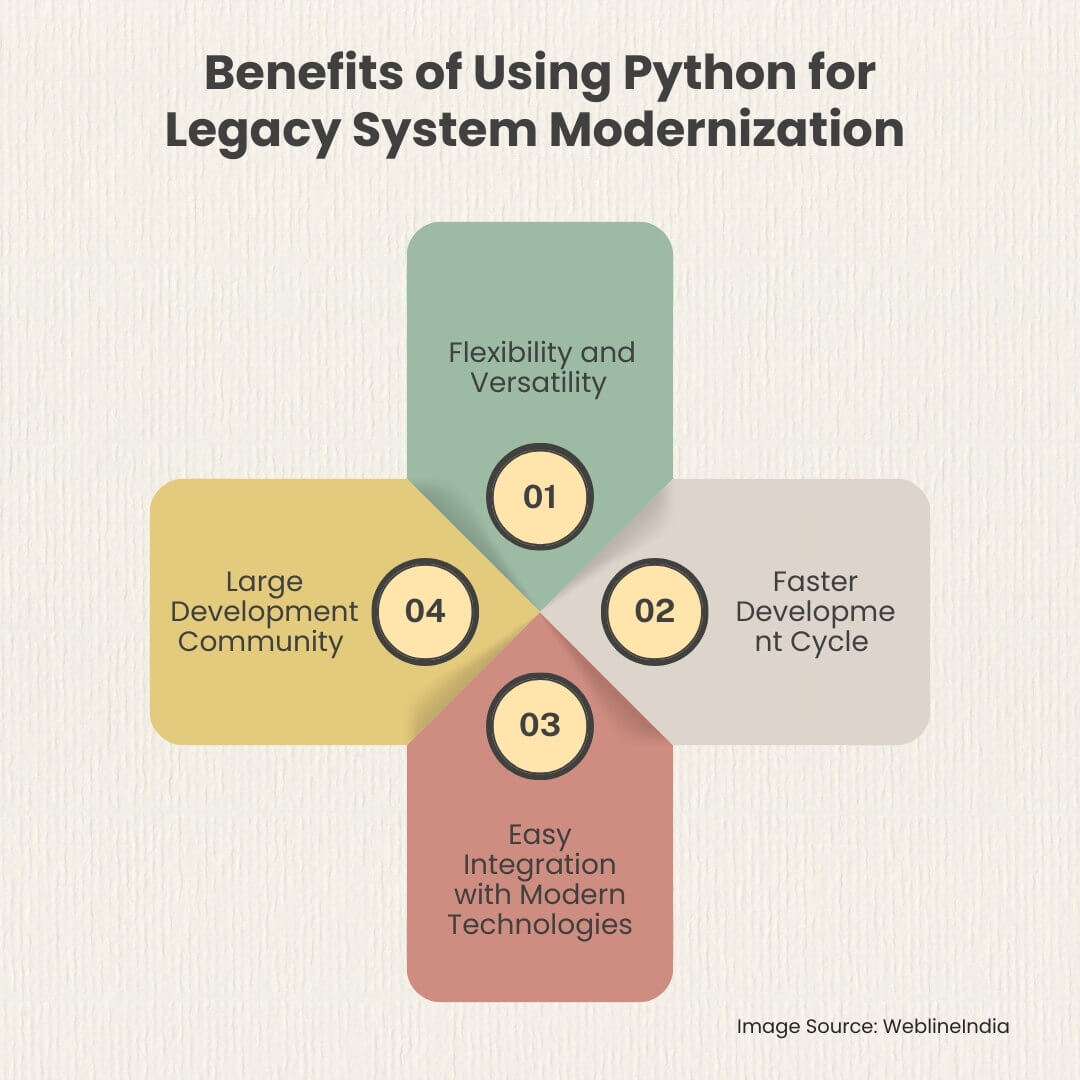
1. Flexibility and Versatility
Python development stands out for its flexibility. Python is a high-level, interpreted language with a large number of libraries and frameworks that can be used for various purposes, from web development to data science and machine learning. For legacy systems that need new functionalities or enhancements, Python offers an easier transition compared to more rigid languages.
- Cross-platform compatibility: Python works across various operating systems, making it ideal for integrating with legacy systems that run on multiple platforms.
- Extensive library support: Python offers a broad range of libraries that can be used to add new features to legacy systems, including tools for web development (e.g., Flask, Django) and data analysis (e.g., Pandas, NumPy).
2. Faster Development Cycle
Another advantage of using Python development in legacy system modernization is the rapid development cycle it enables. Python’s concise and readable syntax allows developers to write and modify code quickly, significantly reducing development time compared to other, more verbose languages. This can be particularly beneficial when working with legacy systems that require urgent updates or fixes.
3. Easy Integration with Modern Technologies
If the goal of legacy system modernization is to integrate with newer technologies (such as cloud services, AI, or big data tools), Python can be a strategic choice. Python has robust support for integration with cutting-edge technologies, thanks to libraries and frameworks that provide easy access to:
- Cloud computing services (e.g., AWS SDK for Python, Google Cloud SDK).
- Machine learning and AI frameworks (e.g., TensorFlow, PyTorch).
- Big data frameworks (e.g., Apache Hadoop, Apache Spark).
For businesses that need their legacy systems to interact with new technologies, Python development provides a seamless bridge.
4. Large Development Community
Python’s active development community offers another advantage for legacy system modernization. With a vast pool of developers, the Python ecosystem benefits from constant updates, security patches, and new libraries. This makes it easier to find solutions to challenges encountered during the integration of Python into legacy systems.
Ready to upgrade your outdated systems with expert Python developers?
Strategies for Successful Integration of Python with Legacy Systems
To make the integration of Python development with legacy systems as smooth as possible, there are several strategies that developers can employ. Careful planning and execution are key to ensuring success.
1. Refactor Legacy Code Gradually
Rather than replacing an entire legacy system, which could lead to significant disruption, a gradual refactor is often more manageable. This method involves progressively rewriting the legacy system components with Python while maintaining the system’s core functionality. Benefits of gradual refactoring include:
- Reducing downtime.
- Minimizing risk by testing the new code incrementally.
- Allowing a smoother transition for end-users.
2. Implement Microservices Architecture
Another approach to integrating Python into legacy systems is adopting a microservices architecture. In this model, the legacy system is broken down into smaller, independent services that can be rewritten using modern technologies like Python. These microservices communicate with each other through APIs, which allows them to work together without requiring a complete overhaul of the legacy system.
3. Utilize Interfacing Technologies
For systems that cannot be easily refactored or migrated, developers can use interfacing technologies to connect Python with the legacy system. This could involve using technologies such as:
- REST APIs: Exposing functionality of the legacy system via APIs allows Python code to interact with the older system.
- Message queues: Communication between the legacy system and Python-based services can be handled asynchronously via message queues like RabbitMQ or Kafka.
Risks of Using Python for Legacy System Modernization
While Python offers numerous benefits, it’s essential to be aware of potential risks:
- Performance Considerations: As an interpreted language, Python may not be as performant as compiled languages like C++ or Java, especially for computationally intensive tasks. However, this can often be mitigated through code optimization, efficient algorithms, and the use of performance-oriented libraries like NumPy.
- Global Interpreter Lock (GIL): The GIL in Python can limit the performance of multi-threaded applications by allowing only one thread to hold control of the Python interpreter at a time. This can be a concern for legacy systems requiring high concurrency. However, techniques like multiprocessing and asynchronous programming can be employed to overcome this limitation.
- Integration Challenges: While Python generally integrates well with other technologies, challenges may arise when dealing with very old or obscure technologies used in some legacy systems. Thorough planning, careful selection of integration tools, and potentially the use of wrapper libraries or middleware can address these challenges.
Best Practices for Python Development for Legacy Systems
Consider these best practices to maximize the success of legacy modernization with Python. You can refer to a professional guide to outsource Python development to get an an upper edge for your business apps development.
Here is the glimpse of some essential factors to consider:
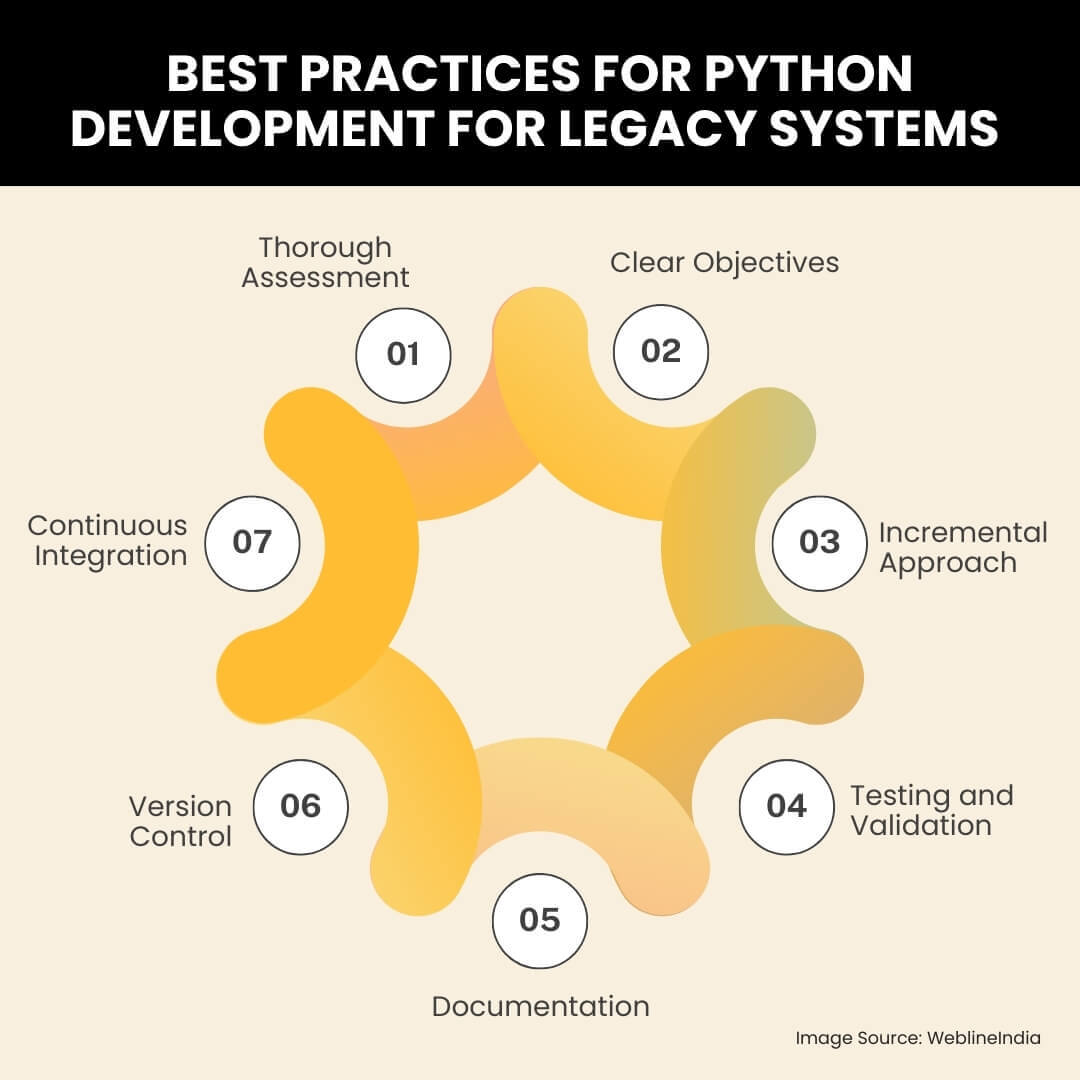
- Thorough Assessment: Conduct a comprehensive assessment of the legacy system to understand its architecture, dependencies, data structures, and potential challenges. This includes identifying the core business logic, data migration needs, and integration points with other systems.
- Clear Objectives: Define clear and measurable objectives for the legacy modernization project. What are the specific goals you aim to achieve? Which aspects of the system are most critical to modernize? Prioritize functionality and focus on delivering value incrementally.
- Incremental Approach: Instead of a complete overhaul, consider a phased approach to modernization. Start with the most critical parts of the system or those that offer the greatest return on investment. This minimizes disruption and allows for continuous feedback and adjustments.
- Testing and Validation: Rigorous testing is crucial throughout the modernization process. Implement unit tests, integration tests, and performance tests to ensure the modernized system functions correctly, meets performance requirements, and integrates seamlessly with other systems.
- Documentation: Maintain comprehensive documentation throughout the project. This includes documenting the existing legacy system, the modernization approach, code changes, and any new functionalities introduced. Good documentation is essential for knowledge transfer and long-term maintainability.
- Version Control: Use a version control system like Git to track code changes, collaborate effectively, and revert to previous versions if necessary. This ensures code integrity and facilitates rollback in case of issues.
- Continuous Integration/Continuous Delivery (CI/CD): Implement CI/CD pipelines to automate the build, testing, and deployment processes. This promotes rapid iteration, reduces errors, and ensures a smooth transition to the modernized system.
Conclusion
Python presents a compelling option for legacy system modernization, offering numerous benefits in terms of readability, versatility, and development speed. However, it’s crucial to carefully assess the risks and challenges associated with Python development in this context.
You can hire the best Python developers from a renowned IT agency who can help you get adhered to best practices, conduct thorough planning, and leverage the extensive Python ecosystem to successfully modernize your legacy systems and unlock the benefits of modern technology. With careful consideration and strategic execution, Python can be a valuable ally in revitalizing aging systems and propelling businesses forward.
Social Hashtags
#Python #LegacySystems #PythonDevelopment #LegacySystemModernization #TechInnovation #ModernizationStrategies #SoftwareDevelopment #DigitalTransformation #ITSolutions #TechUpgrades
Looking to transform your legacy systems into scalable business solutions?
Testimonials: Hear It Straight From Our Customers
Our development processes delivers dynamic solutions to tackle business challenges, optimize costs, and drive digital transformation. Expert-backed solutions enhance client retention and online presence, with proven success stories highlighting real-world problem-solving through innovative applications. Our esteemed clients just experienced it.
